Created: 11 November 2000. Updated 15 Mar 2016, Other pages updated separately
Getting Steamed up in the UK!
locomotives from West Somerset Railway and other Heritage Lines
![]()
Created: 11 November 2000.
Updated 15 Mar 2016, Other pages updated separately
Now 2 pages
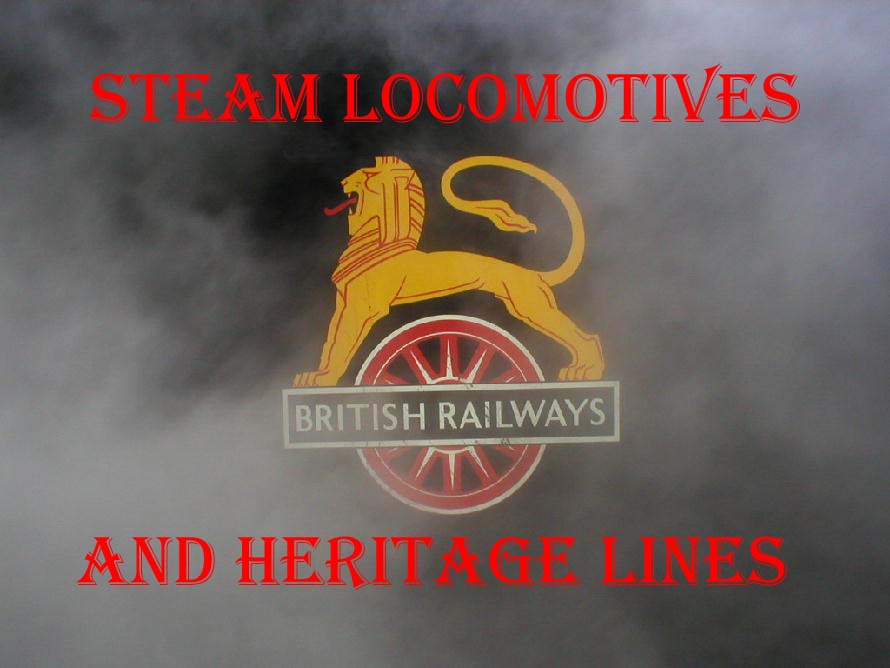
| As a kid on Merseyside, I would skip a ride on the "lecky" (electric) train to Bidston station, where the steam train line crossed, and "skip" rides on the steam passenger trains which ran through Bidston to and from Seacombe Ferry, Wallasey. Oh, I loved those days!. I spent a day, a while back, on the West Somerset Railway - brilliant! Well worth a visit. (Link above) Every since those little kid days I have loved the smell and romance associated with the Steam Days. Enjoy these locomotives with me. The US locos were sent to me from Chris (Arky4). Many thanks. More locomotives added. Now into 2 pages. Feb 2011: Since I started this section grandsons, Rowan, was born in 2007 and Fáelán in 2009 and they now surf You Tube looking at video after video of trains. |
 |
| 35028 was built at Eastleigh Works in 1948. After a few weeks running in it was allocated to first to Dover then to Stewarts Lane shed in London where it worked heavy trains on the trunk routes to the South East Channel ports, frequently working the prestige expresses, Golden Arrow and The Night Ferry. After rebuilding in 1959 it was initially allocated to Nine Elms shed where it headed such trains as the Bournemouth Belle and the Atlantic Coast Express. While working the A.C.E. in 1961 it was unofficially timed at 104 mph (167 km/h) passing Axminster. On July 2, 1967 Clan Line hauled a farewell special from Waterloo to Bournemouth and back and thus ended its BR career. Clan Line was bought one month after finishing the farewell special by the Merchant Navy Locomotive Preservation Society from BR for the sum of £3,850. The Group had wanted 35022 Holland-America Line but it was sent to Barry to be scrapped before they could purchase it so the Group purchased Clan Line instead (although 35022 Holland America Line would eventually be preserved). Clan Line was one of the first preserved locomotives to participate in steam specials and in 1974 hauled its first revenue earning train in preservation from Basingstoke to Westbury. |
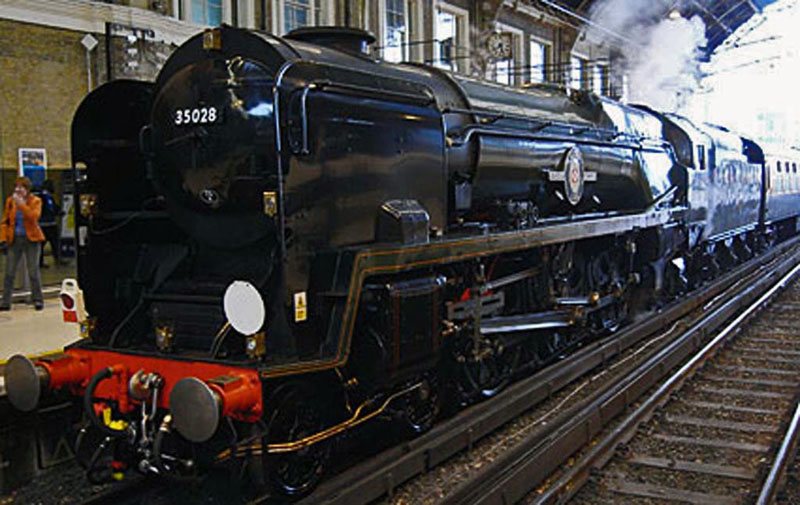 VictoriaVictoria |
 Union of South Africa |
60009 Union of South Africa is an LNER Class A4 steam locomotive built in Doncaster in 1937. It is one of six surviving Gresley A4s, currently operational and mainline certified. Built for the LNER in 1937 and originally numbered 4488, it was named after the then newly formed Union of South Africa. Although it had previously been allocated the name "Osprey" on 17 April 1937, when it came out of the paint shop on 29 June, it had been renamed. "Osprey" name plates were fitted to the locomotive during the 1980s and early 1990s due to the politics of the time. Its name has since reverted to Union of South Africa. The works number of Union of South Africa was 1853; the plaques are located in the cab itself and not on the exterior cab sides as is the usual practice. |
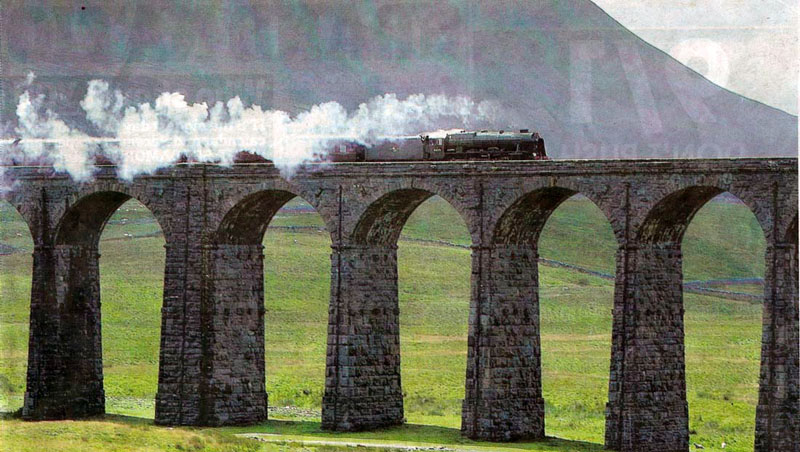 One image that epitomises steam rail in the UK, the Ribbleshead viaduct on the Settle - Carlisle railway |
Ribblehead viaduct is just over the border from Cumbria into North Yorkshire, but as the most impressive structure on the Settle-Carlisle Railway, it is included here. Hundreds of railway builders (“navvies”) lost their lives building the line, from a combination of accidents, fights, and smallpox outbreaks. In particular, building the Ribblehead (then Batty Moss) viaduct, with its 24 massive stone arches 104 feet (32 metres) above the moor, caused such loss of life that the railway paid for an expansion of the local graveyard. Memorials along the line, especially those at St Mary’s Church Outhgill and St Leonards’ Church, Chapel-le-dale commemorate the lives of some of the men who died building the line.Ribblehead viaduct is just a short walk from Ribblehead station. About a mile north of the viaduct, just beyond Blea Moor signal box, is Force Gill Aqueduct, carrying Force Gill over the railway. A footpath leads from Ribblehead viaduct over the aqueduct to Whernside. |
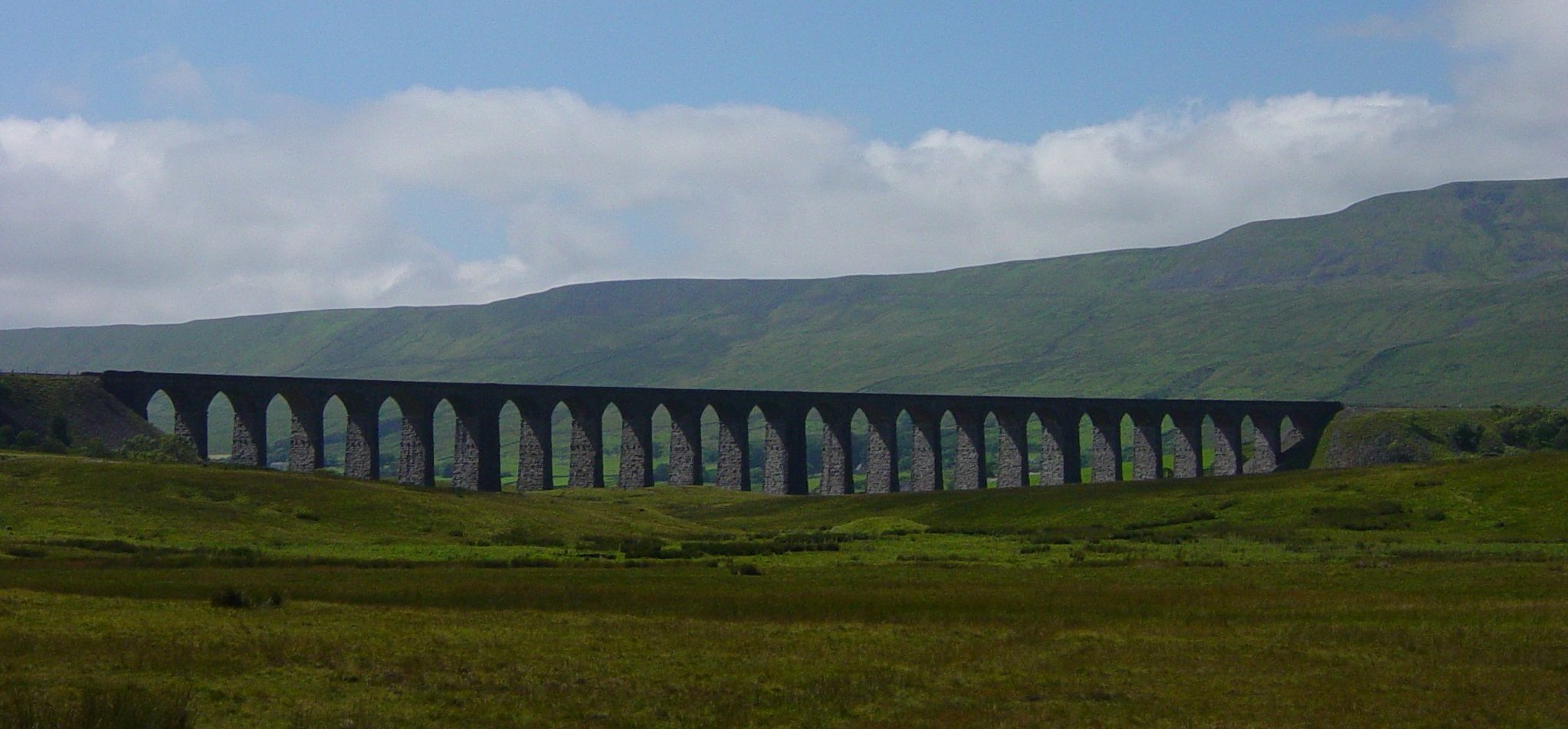 |
https://www.youtube.com/watch?v=Pox9hrq2EhE https://www.youtube.com/watch?v=vbPHk-gNXiA 5699 (see video's) was built at Crewe in April 1936 and named Galatea after HMS Galatea, After nationalisation in 1948, it was renumbered 45699 by British Railways. On 16 August 1953, Galatea was derailed whilst hauling a passenger train at Wilnecote. The derailment was caused by a combination of defects on the locomotive itself, and the condition of the track. Despite the locomotive ending up on its side, only 2 people were reported injured and it was hardly damaged. After being withdrawn in 1964 it was stored at Eastleigh Works in December 1964 and remained there until January of the following year when it was moved by rail to Barry Scrapyard, Galatea was rescued in 1980 from Woodham Brothers scrapyard in Barry, South Wales by the late Brian Oliver and was moved to The Severn Valley Railway originally to provide a spare boiler for preserved sister engine 45690 Leander. 45699 was at Tyseley until 2002 when it was sold to the West Coast Railway Company and moved to Steamtown Carnforth where it was given a complete rebuild. This also included the manufacturing of a new middle driving wheel after the original was cut through after a shunting accident at Barry Island. It made a return to steam in April 2013 on test runs around the Hellifield circle. When 45699 emerged on its first test run it was wearing the identity of its fellow class member No. 5690 Leander. Galatea made its railtour debut on 19 May 2013 working a private charter from King's Lynn to Norwich. It is now operational on the main line running steam specials, and as of 2014 is in British Railways Crimson livery. |
|
|
Now this is a strange one and is listed in the Steam World November 1996, as a mystery. The image is taken above Warminster in 1937. It clearly shows two "mystery" containers on the sidings. I believe them to be Army orientated but could be wrong, does anyone know what these two carriages are? When I lived near Bidston I seem to recall these carriages running steel to the docks etc.Now this is a strange one and is listed in the Steam World November 1996, as a mystery. The image is taken above Warminster in 1937. It clearly shows two "mystery" containers on the sidings. I believe them to be Army orientated but could be wrong, does anyone know what these two carriages are? When I lived near Bidston I seem to recall these carriages running steel to the docks etc.
|
|
The BR Standard Class 8 was a class of 4-6-2 Pacific steam locomotive designed by Robert Riddles for use by British Railways. Only the prototype was constructed, which was named Duke of Gloucester. Constructed at Crewe Works in 1954, the Duke, as it is popularly known, was a replacement for the destroyed Princess Royal Class locomotive number 46202 Princess Anne, which was involved in the Harrow and Wealdstone rail disaster of 1952. The Duke was based on the BR Standard Class 7 Britannia design. It incorporated three sets of modified Caprotti valve gear, relatively new to British locomotive engineering and more efficient than Walschaerts or Stephenson valve gear. The Duke was regarded as a failure by locomotive crews due to its poor steaming characteristics and its heavy fuel consumption. Trials undertaken by British Railways also returned negative feedback, reporting problems with the poor draughting of the locomotive which resulted in difficulty adhering to the timetables. The result was an operational period of only eight years. This unique locomotive was saved from being scrapped at Woodham Brothers scrapyard in Barry, when it was purchased by a group of railway enthusiasts who restored it from scrapyard to as-built condition in 13 years. Since then, modifications have been made to the original design, resulting in one of the most efficient and powerful steam locomotives ever to run in Britain. As a result the Duke of Gloucester can frequently be seen on the mainline around Britain. |
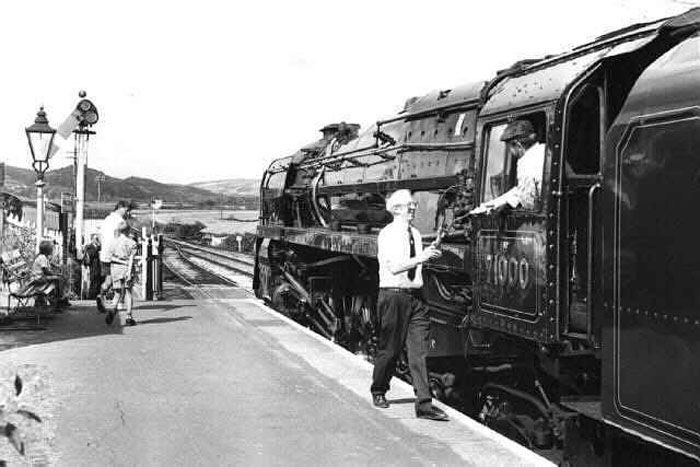 |
 71000 Duke of Gloucester |
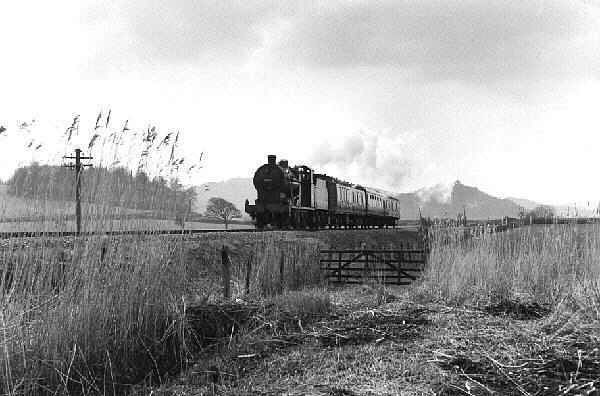 |
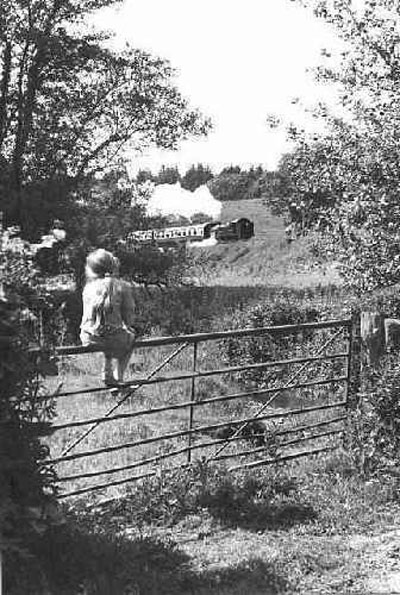 |
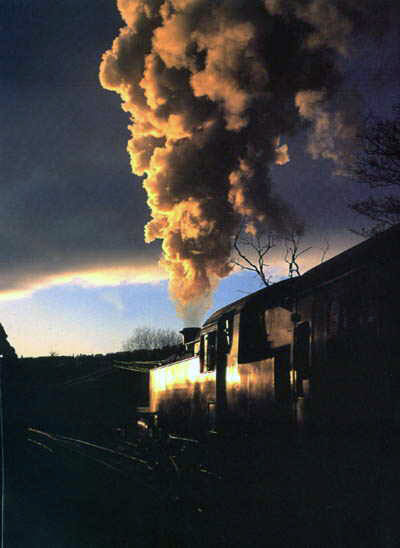 |
 |
 |
|
BR standard
class 9F number 92220
Evening Star
is a preserved British steam locomotive completed in 1960. It was
the last steam locomotive to be built by British Railways. It holds
the distinction of being the only British main line steam locomotive
earmarked for preservation from the date of construction.
It was the 999th locomotive of the whole British Railways Standard
range.Evening Star
was built at Swindon railway works in 1960. Though the last to be
built, it was not the last 9F numerically as Crewe had already
completed engines with higher numbers. It was equipped
with a BR1G-type tender
and given BR Brunswick green livery, normally reserved for passenger
locomotives, and was completed with a
copper-capped
double chimney. All other members of the class of
heavy freight locomotives were painted unlined black.
92220 was the only Class 9F to be named (and liveried in lined passenger express brunswick green) when running with BR, although others have subsequently been named in preservation; the name Evening Star was chosen following a competition run in 1959-60 by the BR Western Region Staff Magazine. There were three competition winners, Driver T.M. Phillips (Aberystwyth), Boilermaker J.S. Sathi (Old Oak Common) and F.L. Pugh (Paddington), who had all suggested Evening Star.The name Evening Star had been used twice before on GWR locomotives: one of the early Star class broad gauge locomotives built in 1839 was named Morning Star, and a subsequent member of the same class was named Evening Star; and a locomotive of the four-cylinder 4000 class which was built in 1907 was also named Evening Star. A special commemorative plate was affixed below the nameplate on the smoke deflectors. |
|
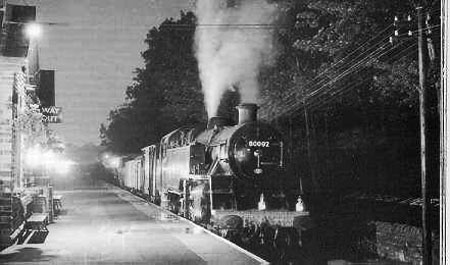 |
 |
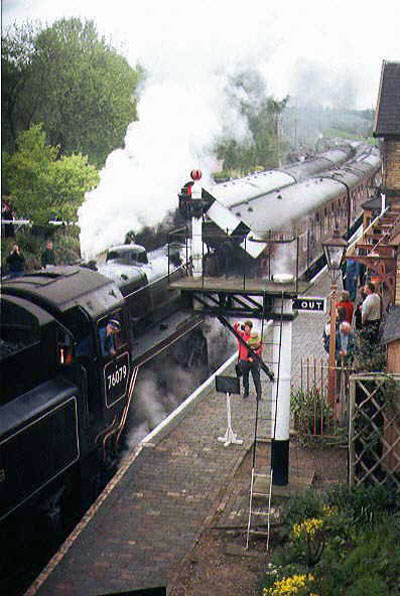 |
The 76000 series of Moguls were first introduced in 1952 and soon showed themselves to be good modern locomotives with a high route availability. Although the Southern-based members of the class were more often seen on passenger work, the design was biased towards goods traffic, as evidenced by the relatively small diameter driving wheels. However, like most BR Standard classes, they were destined to lead very short lives with the mass destruction of steam power in the late 1960’s. No 76079 (left) was built at the Horwich works of the former Lancashire and Yorkshire Railway in February 1957 and entered service with the London Midland region at Sutton Oak shed. No 76079 was taken to Steamport, Southport in July 1974 (The 59th Locomotive to be rescued from Barry) and initially went on display as a static exhibit. Subsequently privately owned, it was moved to a site undercover in Liverpool where rebuilding was carried out. No 76079 is now owned by Riley and Son(e) Ltd, where it is fully restored and mainline registered. It is a busy engine, regularly performing on the "Whitby Endevour" for the North Yorshire Moors Railway and the summer season “The Cambrian” operated by West Coast Railway Company. |
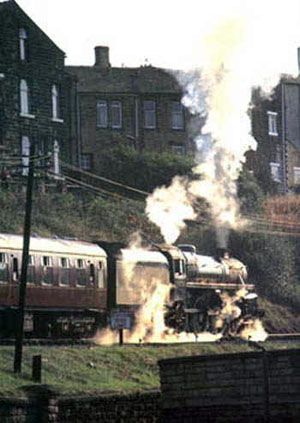 |
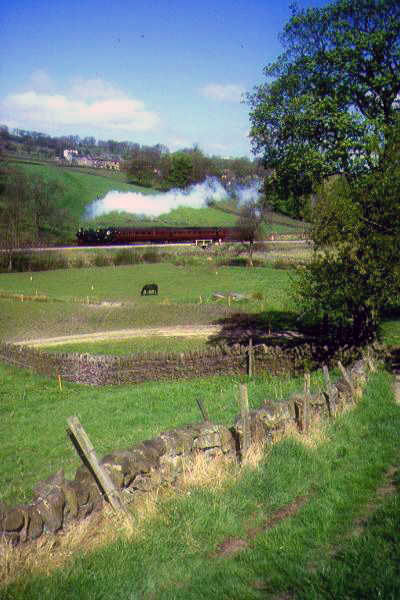 |
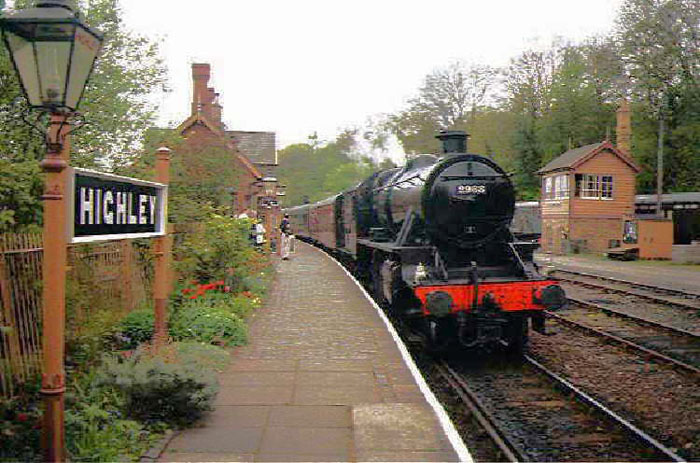 |
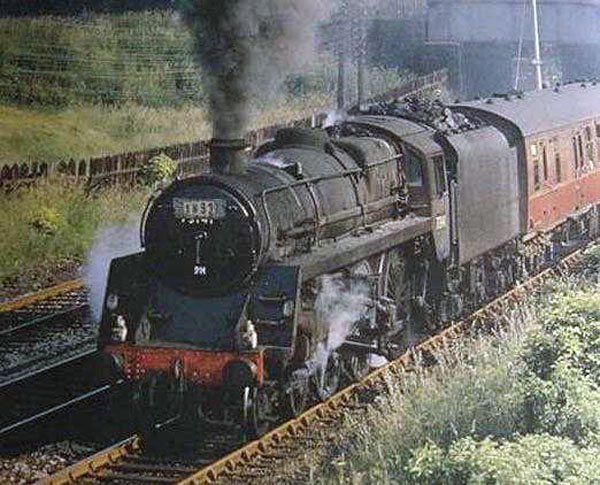 |
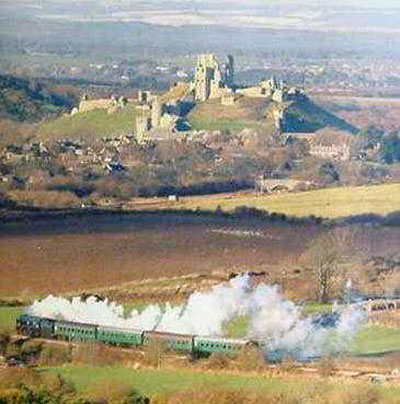 |
Swanage Line, passing Corfe Castle |
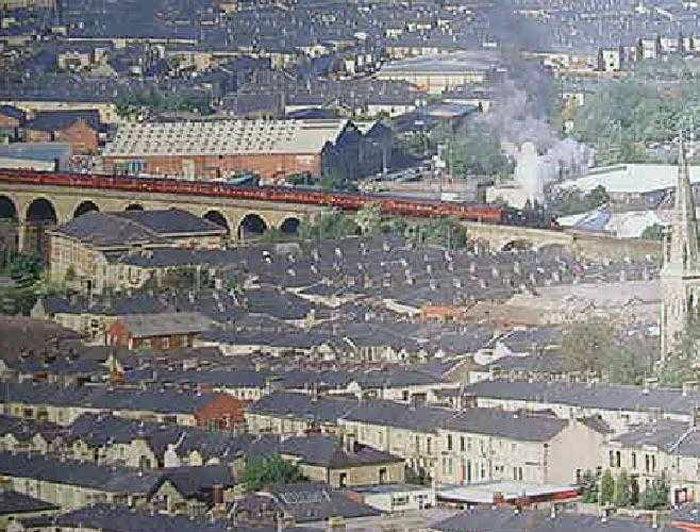 |
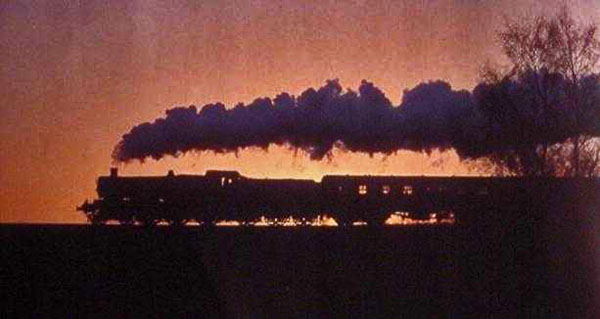 |
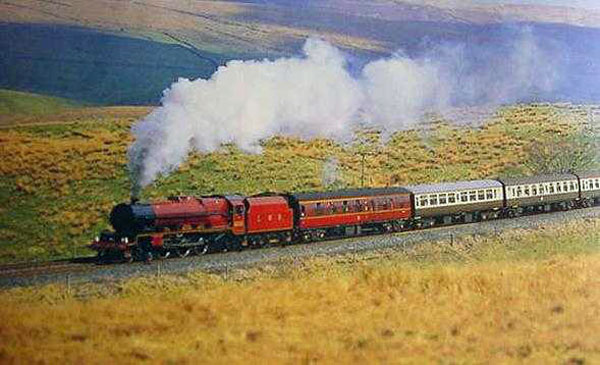 |
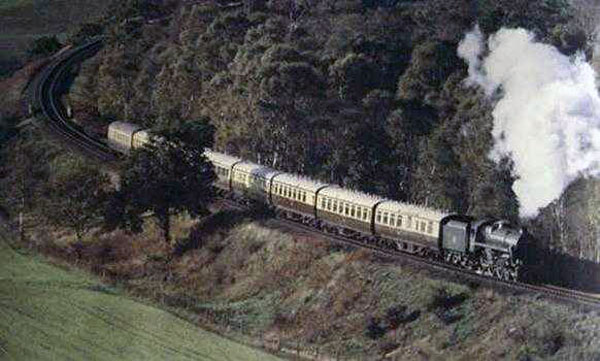 |
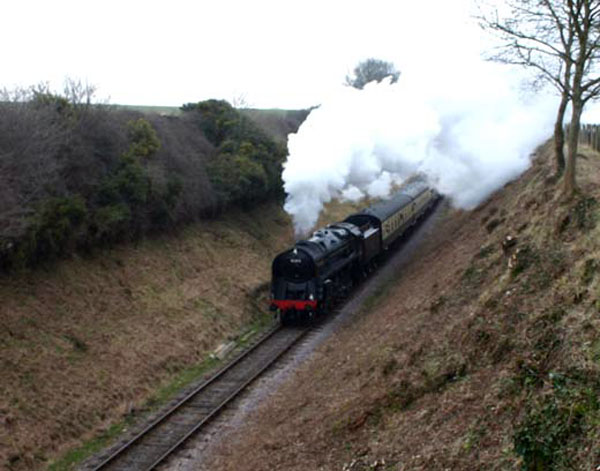 |
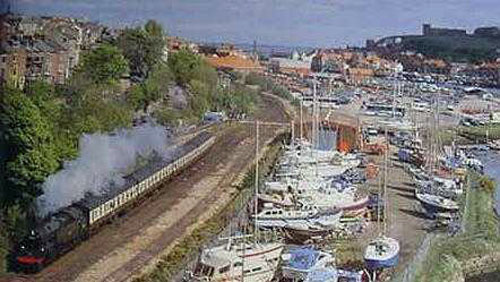 |
| 5224 (right) has been restored and has run in preservation. It left Barry yard in October 1978. The locomotive is owned by Pete Waterman and is currently under overhaul at the Crewe Heritage Centre. The locomotive has a 5275 style front end with a curved foot plate and a raised section over the cylinders. |
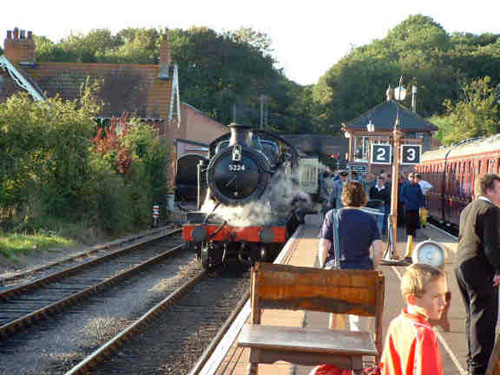 |
 |
Earl Bathurst is a preserved Castle class locomotive. The locomotive is run by the Didcot Railway Centre. It was originally built as Drysllwyn Castle in May 1936. Its first shed allocation was Swansea Landore. Renamed Earl Bathurst in August 1937; the name coming from a de-named GWR Dukedog Class. It was moved to Neath shed in April 1961 before its final move to Llanelly in February 1963. It was withdrawn May 1963 after completing 1,300,000 miles. It was acquired by Woodham Brothers scrapyard in Barry, South Wales in October 1963. The locomotive was bought by John Mynors from the scrap yard and was sold following his death. It was repainted into BR livery but has now been withdrawn due to the expiry of its boiler certificate. It is unlikely to be overhauled for a while due to the current overhauls of 4079 Pendennis Castle and 6023 King Edward II that will provide the centre with two GWR express locomotives in traffic. |
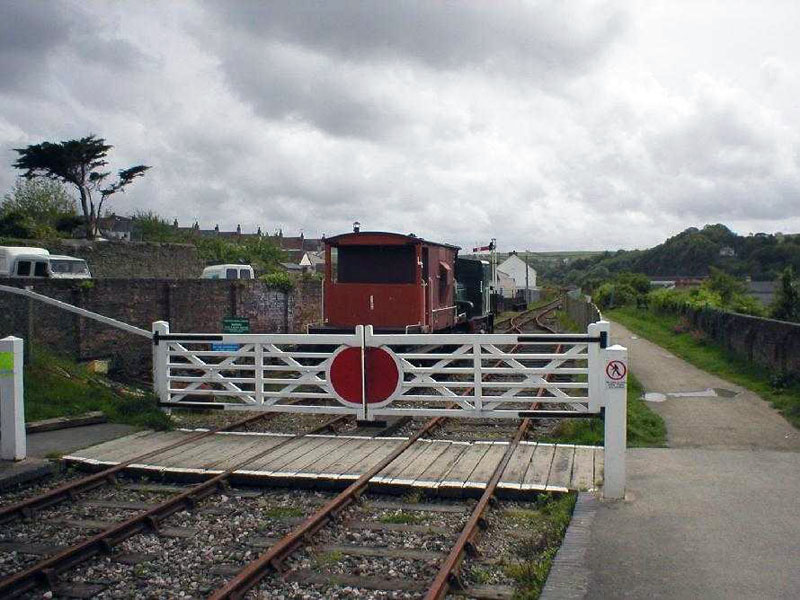 |
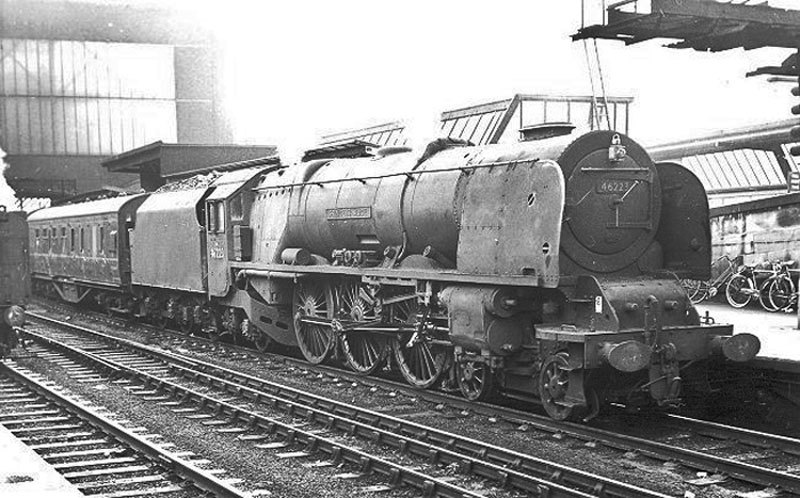 |
 |
 Birkenhead to Dover |
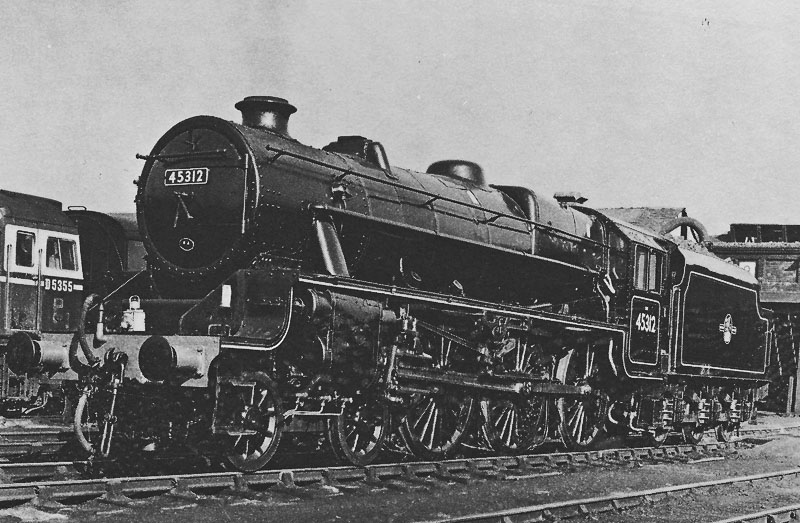 |
 |
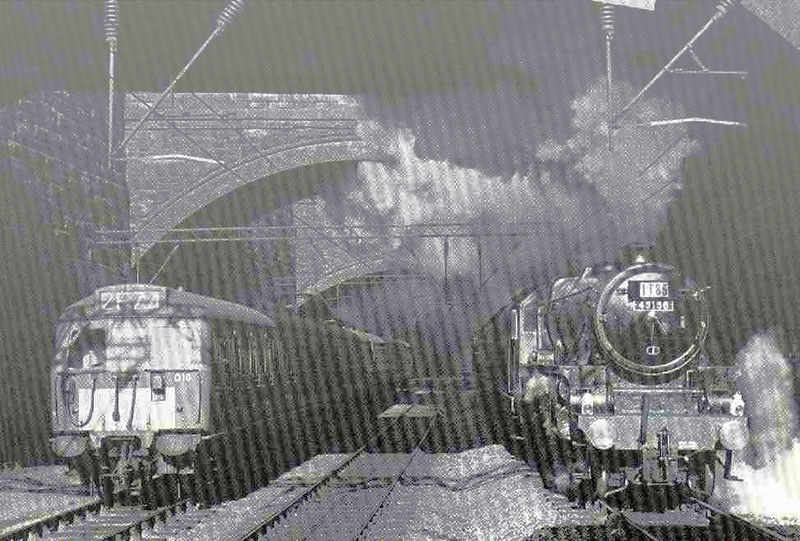 |
Number 45158 (left) 1st Grouping Number lms 5158 2nd Pre Grouping Number 1st Pre Grouping Number Works/Lot Number 1199 Name Glasgow Yeomanry Class Code BLACK Designer Stanier Designation 4-6-0 Built 31/07/1935 Builder Armstrong Whitworth 1948 Shed 65B St. Rollox Last Shed 68B Dumfries Withdrawn 31/07/1964 Disposal details Arnott Young, Troon. Disposal Date 31/10/1964 |
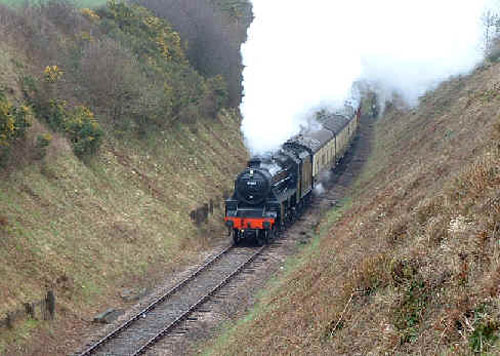 |
 Dart Railway at Totnes |
 |
 |
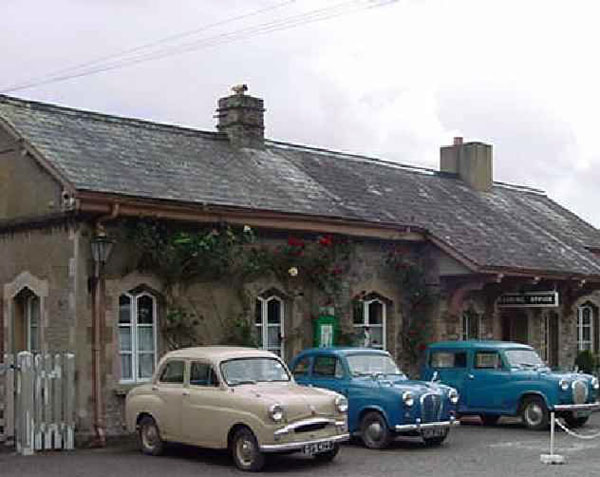 |
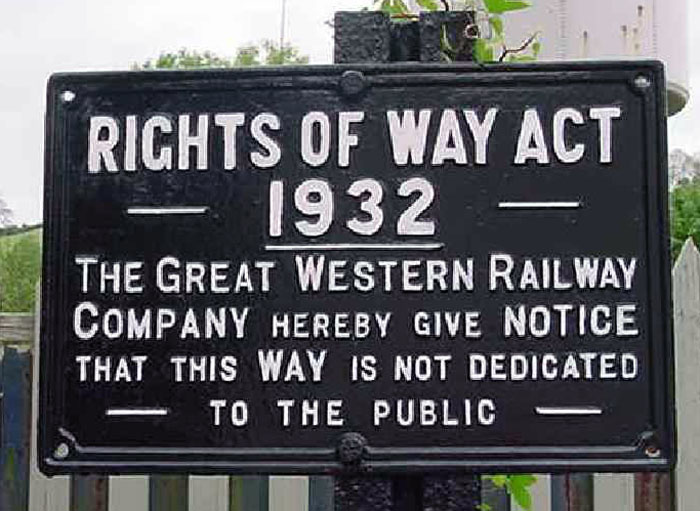 |
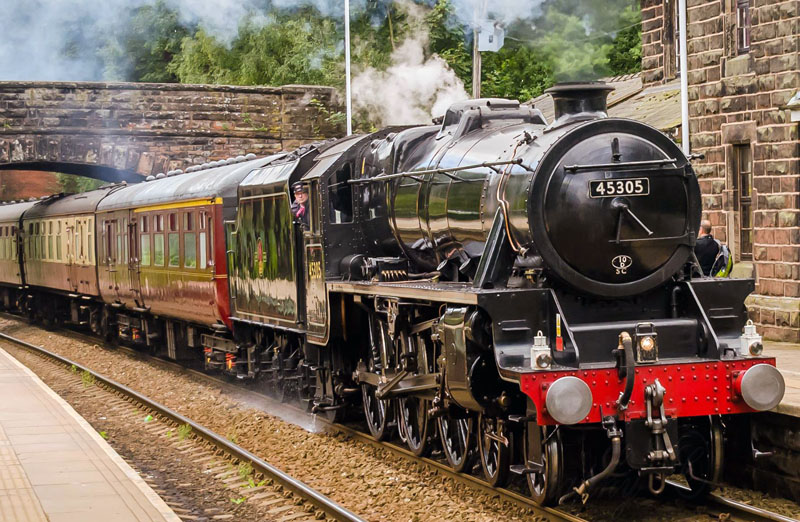 |
Photographer: Brian Gill |
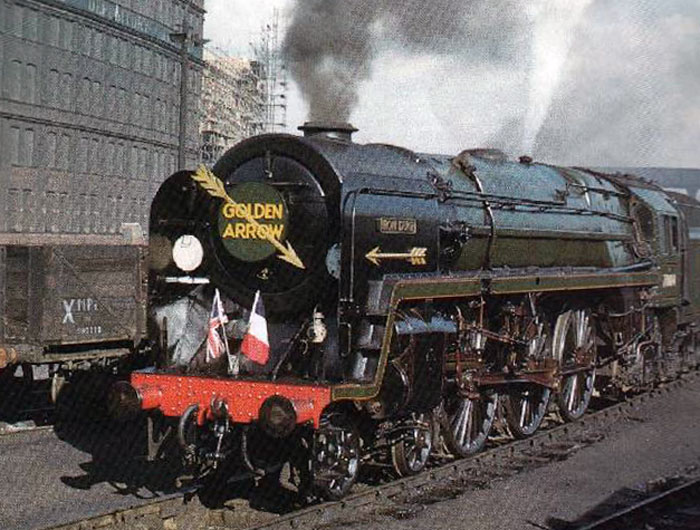 |
 Hoylake (Wirral) Signal Box |
 |
 |
 |
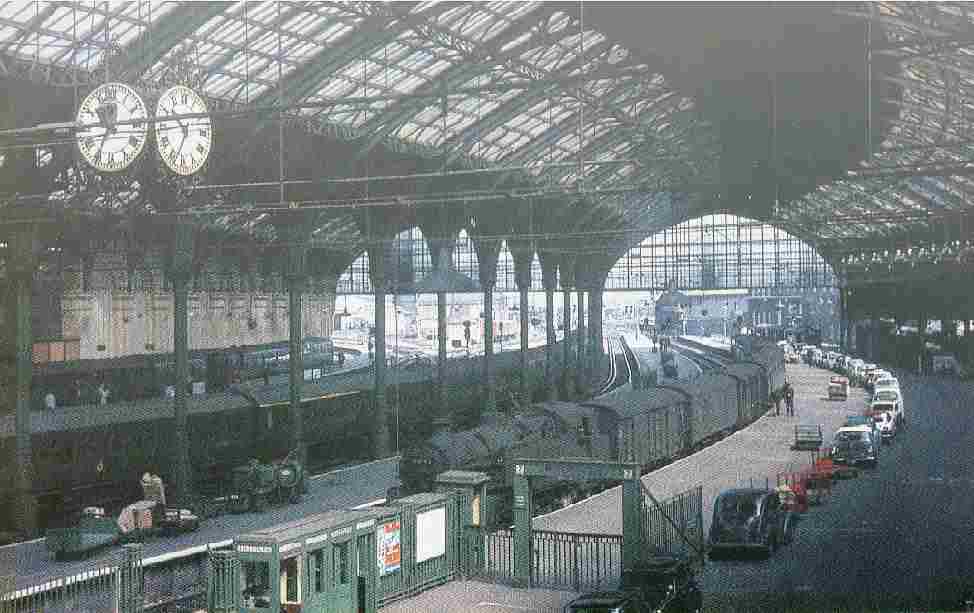 |
 |
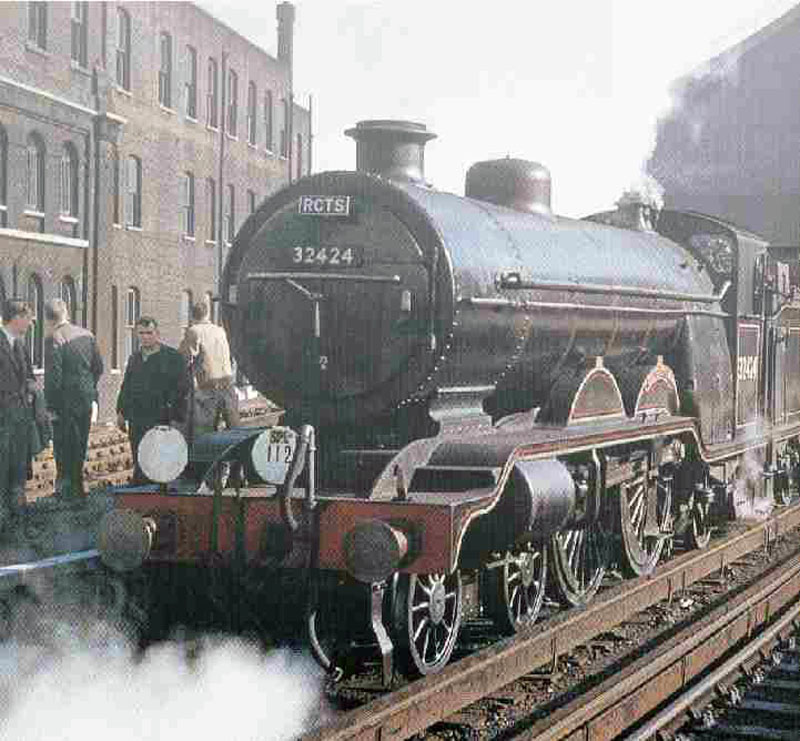 |
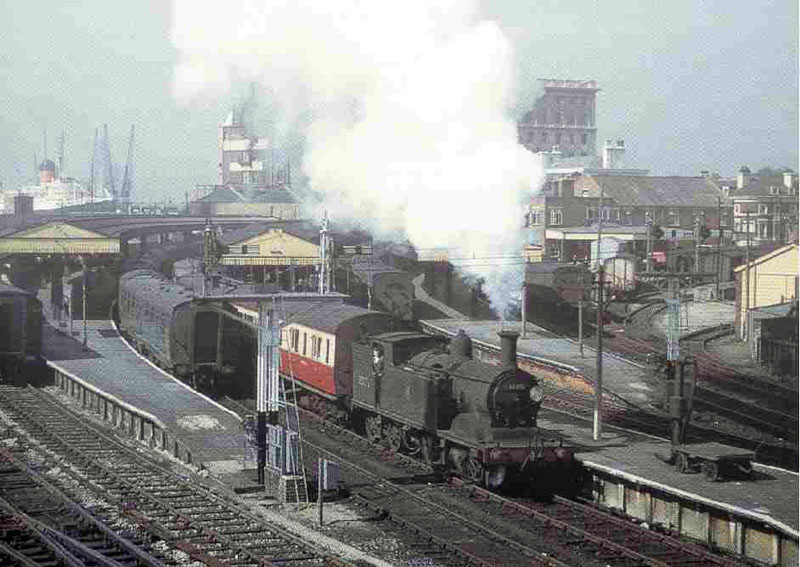 |
Southampton Docks |
| Flying Scotsman |
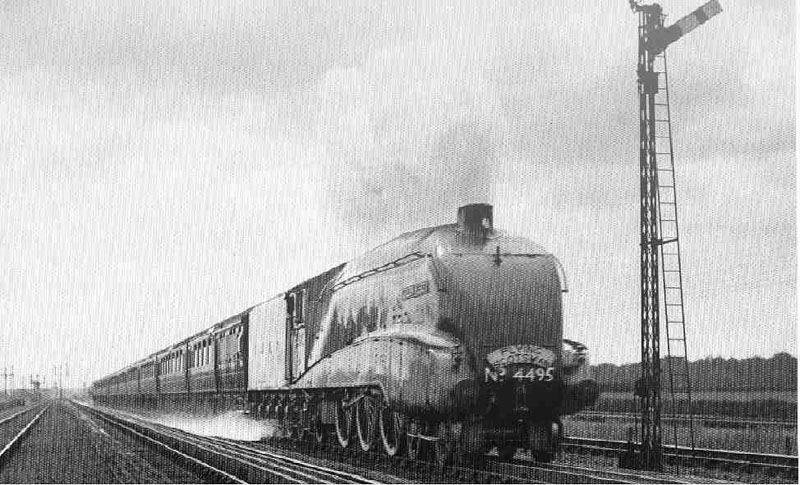 |
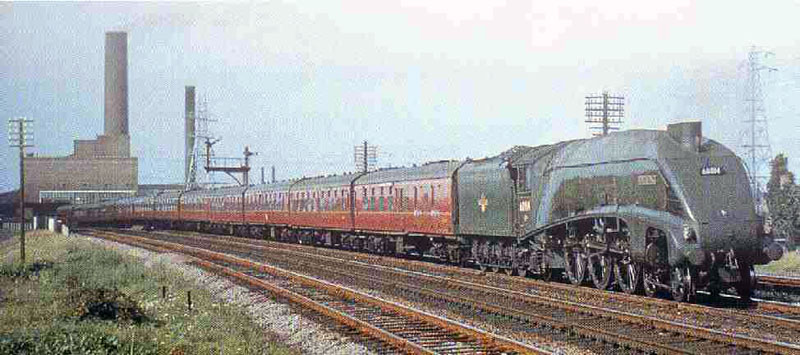 |
Mallard (?) |
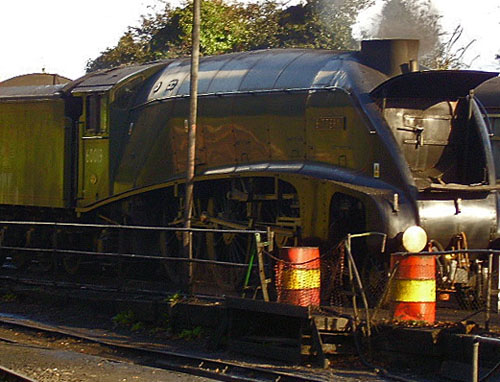 |
Bittern |
|
Perry Barr Birmingham where now stands the M6 |
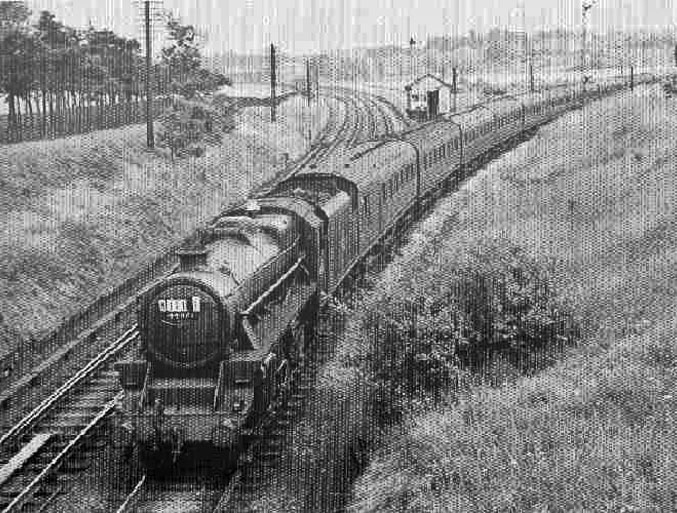 |
 |
New diesel service leaving Liverpool Lime Street alongside the last Stem locomotive |
|
|
|
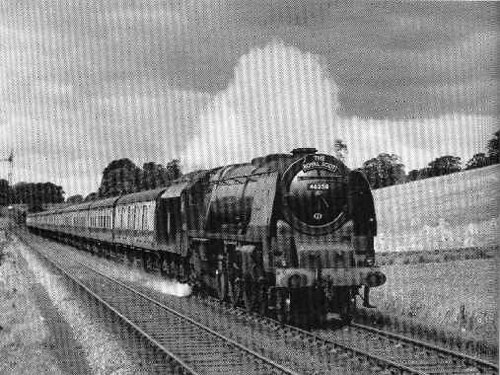 |
|
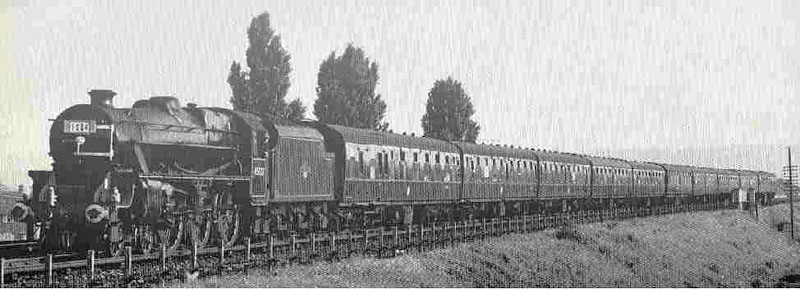 |
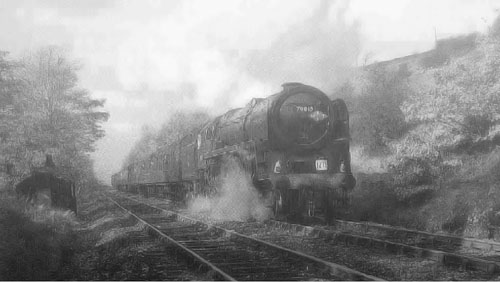 |
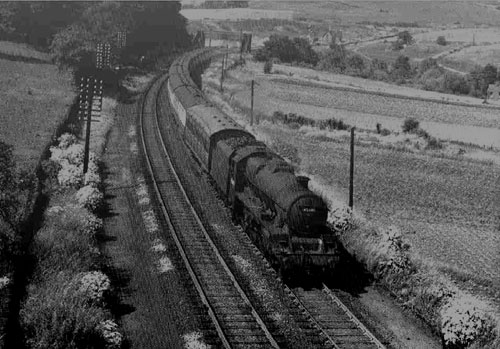 |
Hull to Liverpool 1950 |
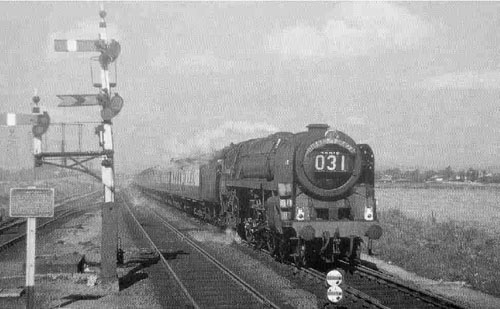 |
 |
|
|
Weymouth. (Garage advertising car wash 2/- = 10p) |
|
|
|
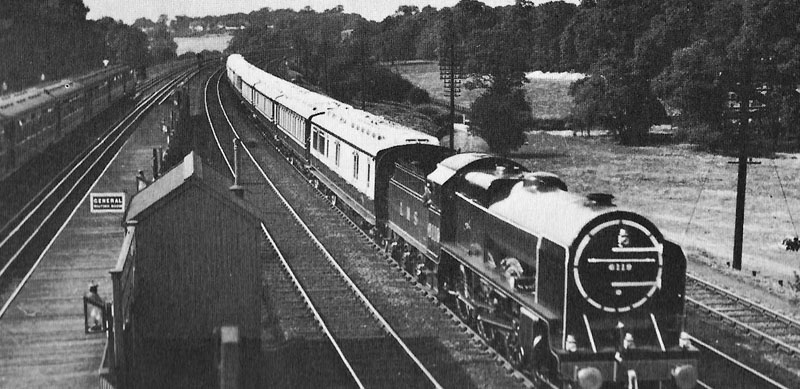 Royal Train heading for the opening of the Mersey Tunnel Liverpool |
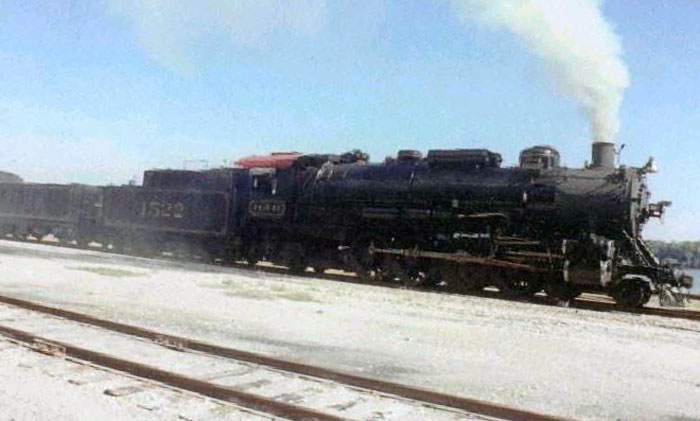 US Loco on UK rail |
 |
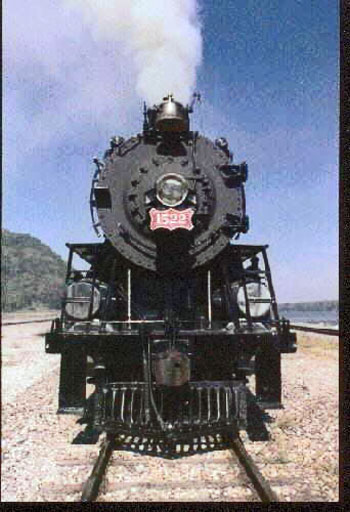 Two US locomotive images sent to me by a friend in the USA |
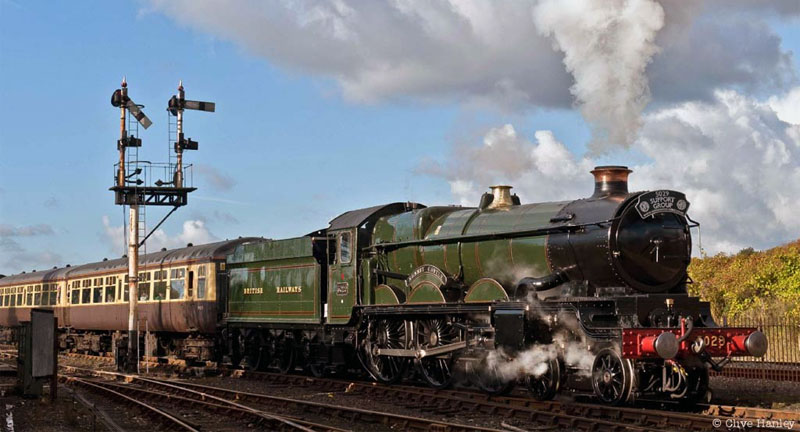 |
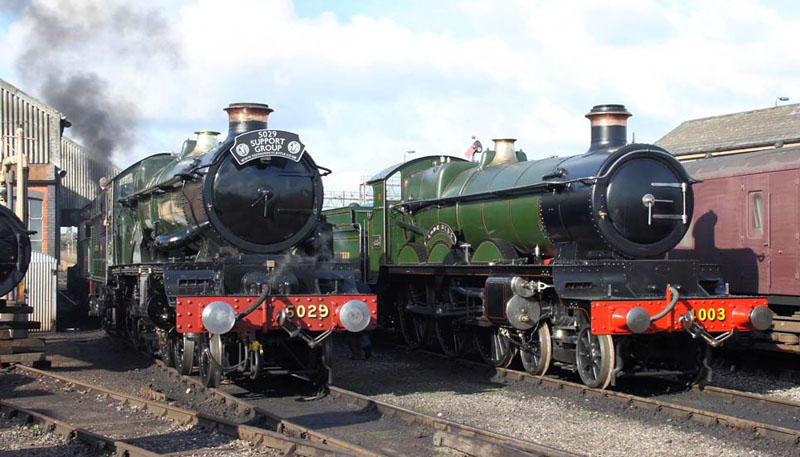 |
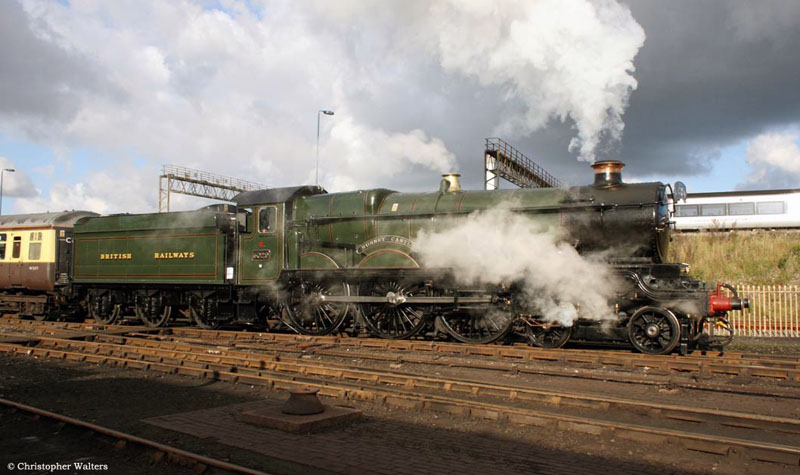 |
The previous three images are from the Tyseley Rail Museum Birmingham |
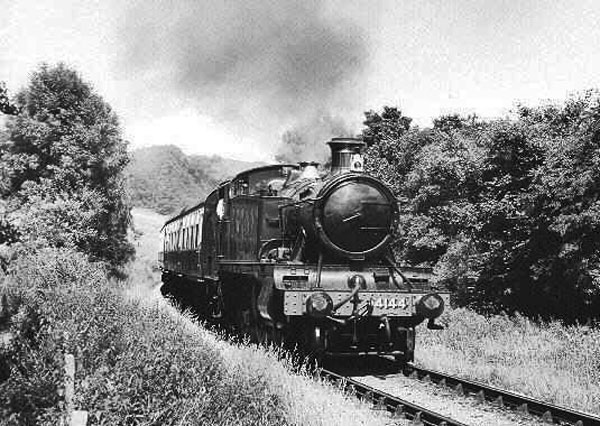 |
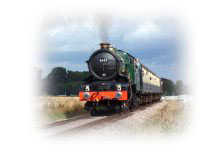 |
 |
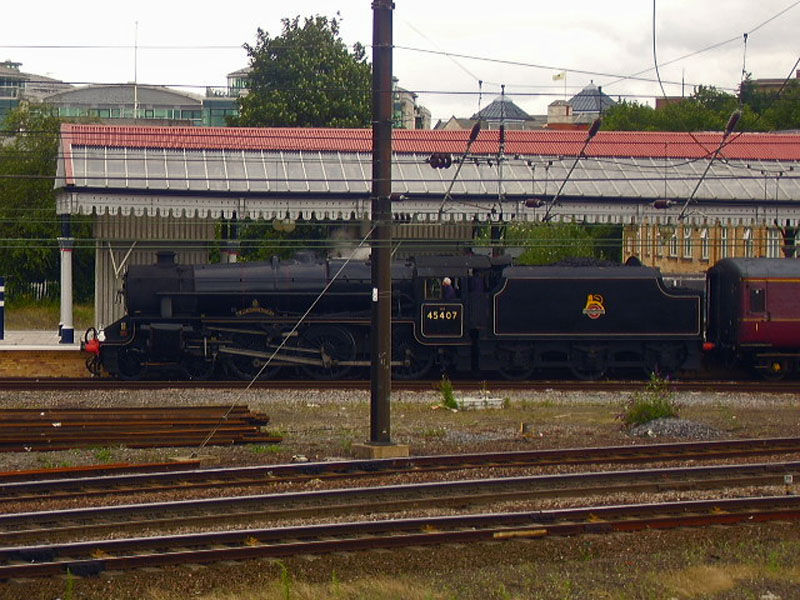 |
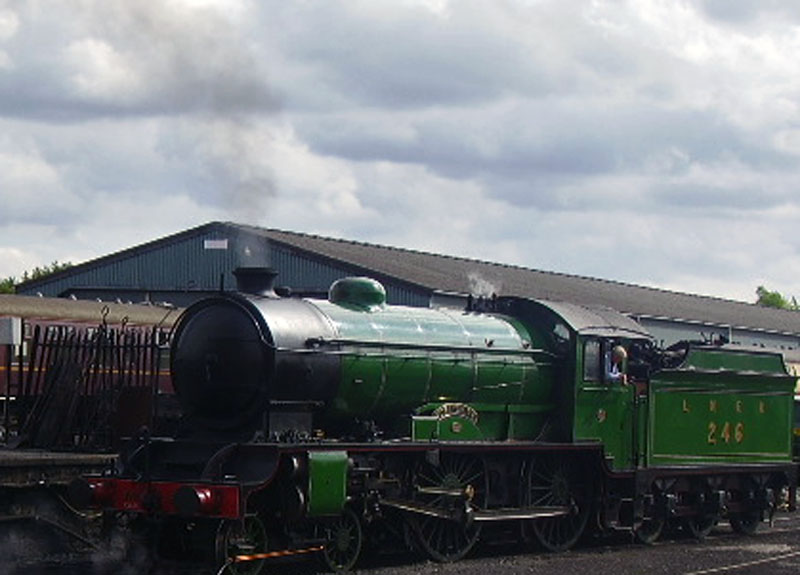 |
 |
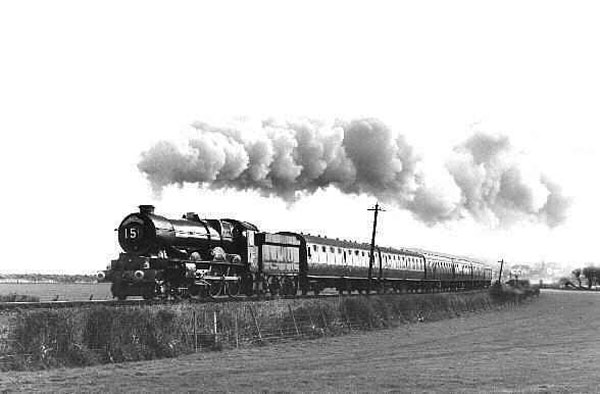 |
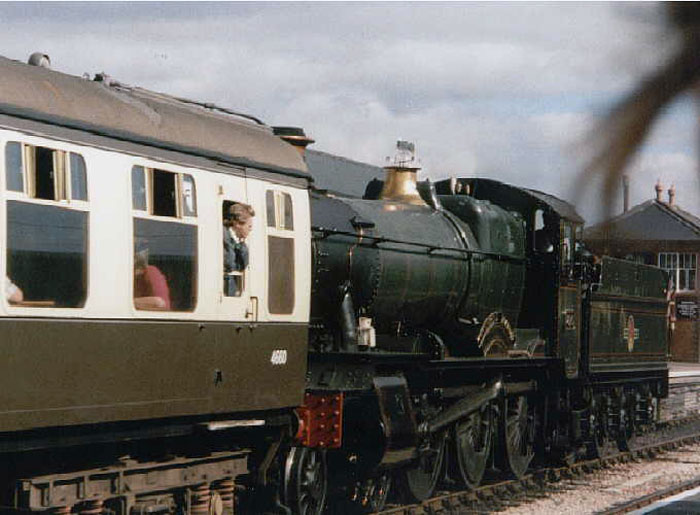 |
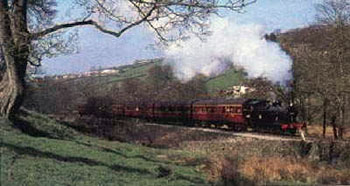 |
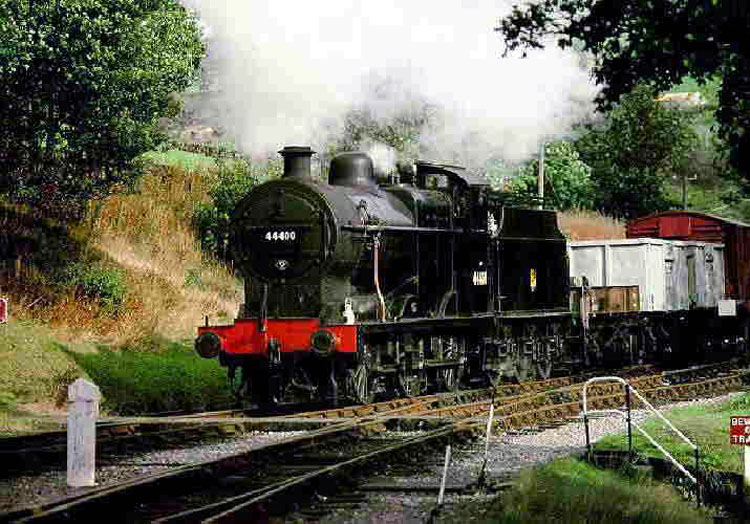 |
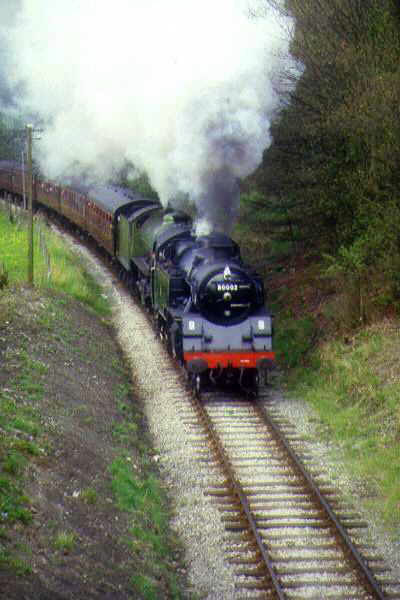 |
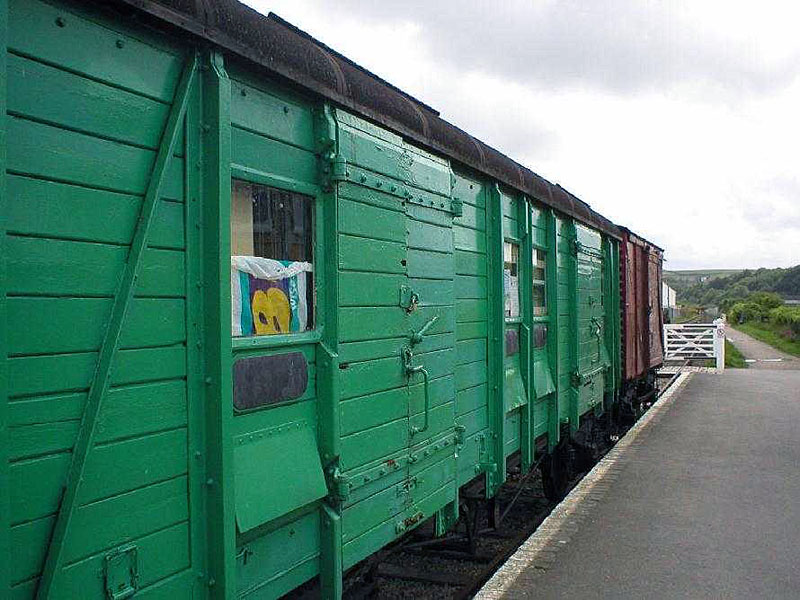 |
|
http://en.wikipedia.org/wiki/BR_Standard_Class_8 http://en.wikipedia.org/wiki/BR_standard_class_9F_92220_Evening_Star |